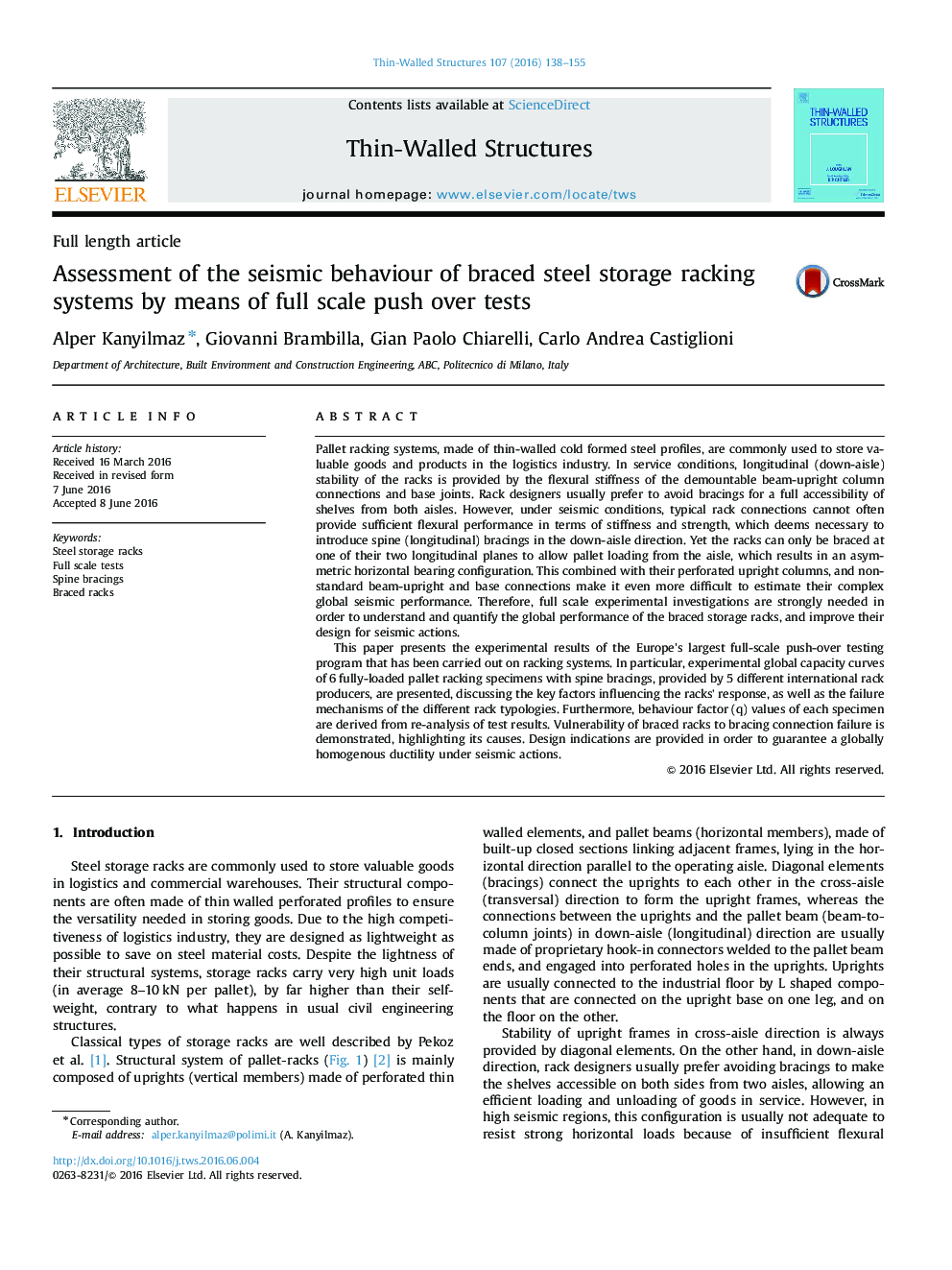| Article ID | Journal | Published Year | Pages | File Type |
|---|---|---|---|---|
| 308270 | Thin-Walled Structures | 2016 | 18 Pages |
•Full scale racks have been tested with different bracing configurations.•Key factors affecting their global response have been discussed.•Behaviour factors of the specimens have been assessed, and compared with design values.•Vulnerability of braced racks to connection failures and has been revealed.•Design indications have been provided for a more ductile rack design with spine bracings.
Pallet racking systems, made of thin-walled cold formed steel profiles, are commonly used to store valuable goods and products in the logistics industry. In service conditions, longitudinal (down-aisle) stability of the racks is provided by the flexural stiffness of the demountable beam-upright column connections and base joints. Rack designers usually prefer to avoid bracings for a full accessibility of shelves from both aisles. However, under seismic conditions, typical rack connections cannot often provide sufficient flexural performance in terms of stiffness and strength, which deems necessary to introduce spine (longitudinal) bracings in the down-aisle direction. Yet the racks can only be braced at one of their two longitudinal planes to allow pallet loading from the aisle, which results in an asymmetric horizontal bearing configuration. This combined with their perforated upright columns, and non-standard beam-upright and base connections make it even more difficult to estimate their complex global seismic performance. Therefore, full scale experimental investigations are strongly needed in order to understand and quantify the global performance of the braced storage racks, and improve their design for seismic actions.This paper presents the experimental results of the Europe's largest full-scale push-over testing program that has been carried out on racking systems. In particular, experimental global capacity curves of 6 fully-loaded pallet racking specimens with spine bracings, provided by 5 different international rack producers, are presented, discussing the key factors influencing the racks’ response, as well as the failure mechanisms of the different rack typologies. Furthermore, behaviour factor (q) values of each specimen are derived from re-analysis of test results. Vulnerability of braced racks to bracing connection failure is demonstrated, highlighting its causes. Design indications are provided in order to guarantee a globally homogenous ductility under seismic actions.
